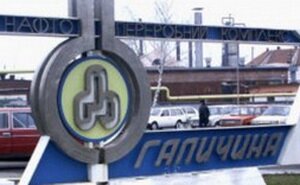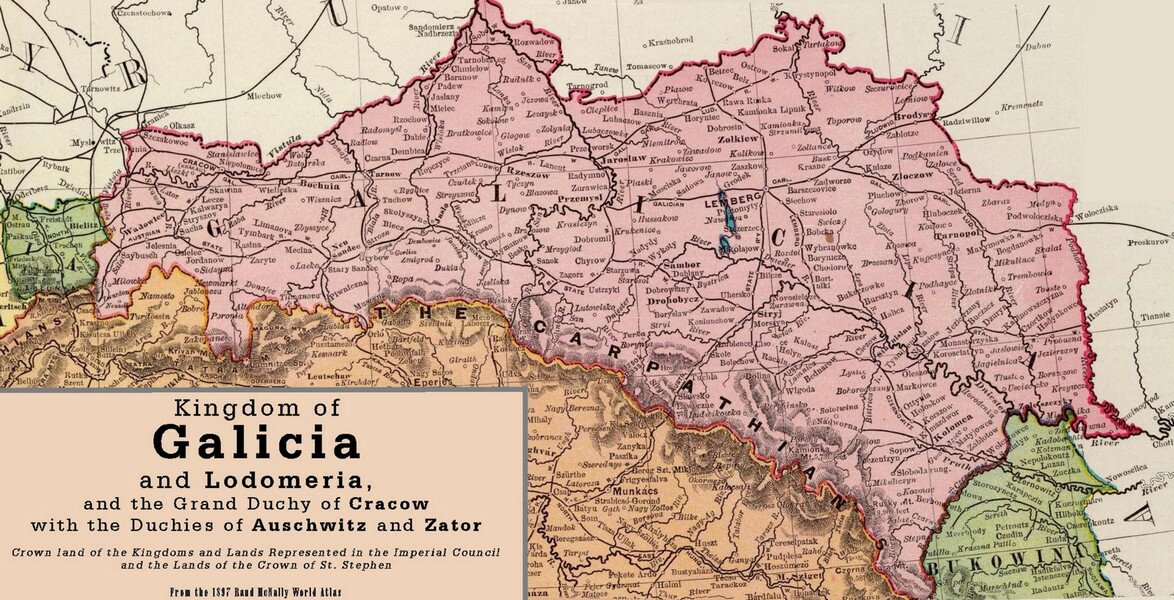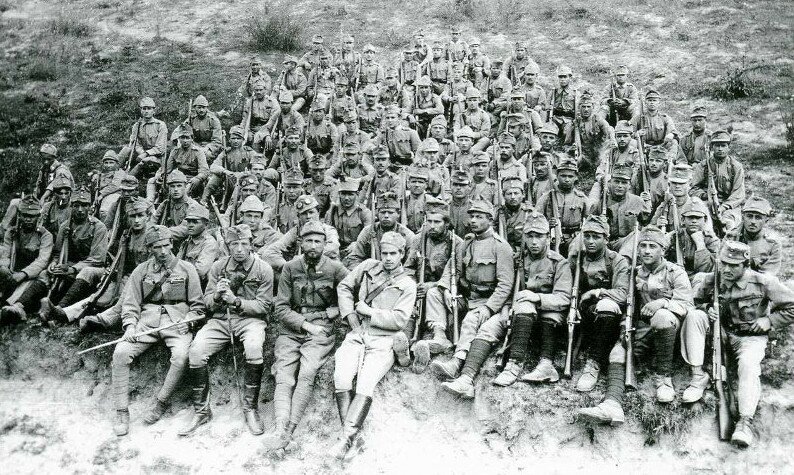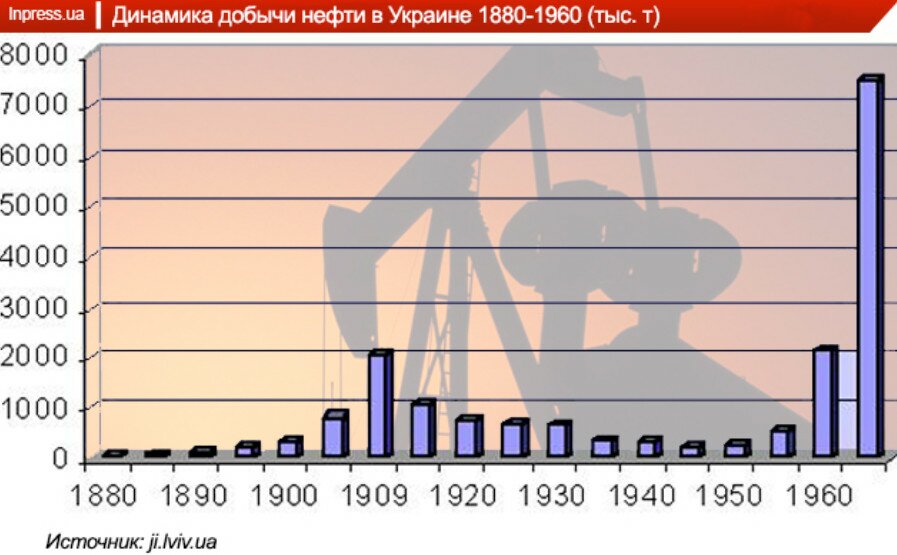
Sergei Rudyuk
The struggle of humanity for fire is full of suffering and pain. After Prometheus had given people the divine fire — source of heat and light, — Zeus Thunderer ordered to crucify the cynic on the rock. The ancient myth associates this event with the Caucasus. But I stick to a different point of view. It happened in the Ukrainian Carpathians. After all, according to scientists, they are the center of the area of ancient archaeological cultures of the Neolithic, Eneolithic, Bronze and Iron ages. Here, at the junction of the mountains and steppes, near the famous deposits of flint, salt and metals, at the intersection of land and river routes connecting through the mountain passes the Prut and Dniester Interfluve and Pokut'a with Transylvania, Semygoroddya, Danube area and the Western Black Sea Region, is situated the ancestral home of all Indo-Europeans and, in particular, of Slavs.
In the Carpathian Chornohora were found remains of an intertribal ritual center, which had been consolidating population of vast territories inhabited by bearers of Trypillya culture. It was here, not in the Middle East, that sign writing was born. According to a well-known historian and orientalist Anatoly Kifishin, in local ancient images on a rock was coded the future of humanity, its development program, already partially implemented and further unfolding before our eyes. Currently, our nation, like titan Prometheus, with bare-breasted is bearing the attack of the two-headed eagle, seeking to monopolize people's right to fire. But were the black Austrian eagle and the white Polish eagle better than the Byzantine eagle in their attitude to inhabitants of the Carpathian region?
This region got under Poland's rule in the middle of the 14th century. Then from enemy's hands died last Ukrainian kings of the dynasty of Romanoviches and a great part of the military and political elite. The direct heir of Kievan Rus — Ukrainian Halychyna-Volyn State — fell under the coordinated attacks of the armed forces of the Asian Golden Horde and European Poland and Hungary.
Governing the land, social life, land ownership was then taken away from the local Ukrainian aristocracy and transferred to the Polish nobility and clergy. Ukrainian church lost its official status. Polish colonization of the region began, which, thanks to the assistance of state power in a short time had grown significantly. As pointed out by Ukrainian scientist M. Shapoval, in 600 years of Polish rule in Halychyna (from the city of Halych in Ciscarpathian, the old capital of the Carpathian region) the number of Poles had reached 25 % of the population. They occupied commanding heights in the economy of the region, pushed local residents out of cities — administrative, cultural and economic-trade centers. By conquest, violence and deceit Ukrainians were turned into a class of rightless peasant serfs, who were feeding for nothing non-Ukrainian higher classes of the society. Conquerors exploited labor and spiritual energy of the Ukrainian people by imposing their own school, art and language. And, of course, they exploited natural resources of the region. As a result, at the time when foreign, although on the Ukrainian land, cities were already shining with electric lights, Ukrainian Carpathians were milling corn with hand millstones and even in some places were starting a fire by rubbing two pieces of wood, like in the days of Prometheus. There was becoming less of wood, because the native Carpathian forests were being mercilessly cut and taken away for export, — the scientist-encyclopedist of the world level Ivan Franko wrote about it with pain.
|
Poland (1686-1770) http://uk.wikipedia.org/ |
Western Ukraine was part of the Polish state until the liquidation of the first Rzeczpospolita by neighboring states. Three partitions of Poland, carried out by Russia, Austria and Prussia in 1772-1795, had changed the political map of Eastern Europe.
Ukrainian Halychyna became part of Austro-Hungarian Monarchy in the first partition of Poland in 1772, when they referred to the right of the Hungarian crown to this land since the time of the Halychyna-Volyn state and later agreements between Polish and Hungarian kings. Although administratively Halychyna now belonged to the Empire of the Austrian Habsburgs, according to Dr. M. Lozinski's research, all political power in the region, thanks to the mixed composition of the population, social prevailing of the Polish element, political structure of the Austrian state and politics of the Austrian government, remained in Polish hands.
Taking advantage of their privileged political position, upper circles of the Polish colonists continued the old policy of economic and national oppression of the indigenous Ukrainian population of Halychyna, similar to the policy of the Russian government towards the majority of the Russian population of tsarist Russia in Naddniprynshchyna (Eastern Ukraine). Poles and Russians denied the existence of the Ukrainian nation. The former argued that Ukrainians were Russified Poles, while the latter said that Ukrainians were Polonized Russians. In fact, the Poles and the Russians tried to assimilate Ukrainians and thus to strengthen their own nation.
Particularly unfair for the Ukrainians were land relations. In 1900, 95 % of Ukrainians of Halychyna survived with the help of agriculture. 80 % of them were land-hungry poor, as 45 % of arable land was owned by about 2400 Polish landowners, and 55 % of agricultural land was distributed among the hundreds of thousands of tiny farms. But their number kept decreasing. In 1875 in Halychyna there were officially over 500,000 landless, that is destitute, peasants. Every year tens of thousands of Ukrainian peasants died of starvation. Landlessness and associated with it poverty had led to mass emigration of Ukrainians of Halychyna to America and Canada.
After the Austrian government's abolition of serfdom, Polish landowners in court deprived the Ukrainian peasants of forests and pastures, which belonged to rural communities. Polish courts were on the side of their countrymen, not on that of Ukrainian peasants. Over 30 000 trials had ended in favor of Polish landowners. Thousands of hectares of forests and pastures by a “lawful” method were taken away from Ukrainian workers. That way the roots of cattle farming in villages were cut.
The government was doing its best to keep low the growth of the Ukrainian intelligentsia. In 1897, out of 14 thousand high school students in the province, 80 % were Poles and only 16 % were Ukrainians. The Poles had 30 gymnasiums, while the Ukrainians had only two. At L'viv University Ukrainians accounted for only 30 % of students. In 1911, out of nearly 80 teachers, only eight Professors were Ukrainians. As a result of these measures the Ukrainian intelligentsia in Halychyna counted about five thousand, priests included, while the Polish-38 thousand, priests excluded. In 1914, the province had 300 high-ranking government officials-Poles, and only 25 — Ukrainians. Therefore, the Ukrainian majority of the region did not have the necessary experience in public administration.
Repeated demands of Ukrainian Deputies of Halychyna's Sejm to give the Ukrainian language equal rights with the Polish language remained unheeded. The government did not subsidize the Ukrainian theater, creation of a Ukrainian university was blocked. Ukrainians' attempts to defend their rights in a constitutional way were brutally suppressed.

|
|
Halychyna on the map of 1897 http://tedlipien.com/ |
During the elections of 1895 and 1897 armed gendarmes dispersed pre-election and election meetings of Ukrainian peasants. At this, 29 people were injured, nine were killed and more than 800 were arrested.
In the struggle for L'viv University in 1907, 100 Ukrainian students were arrested and thrown in jail; Polish students organized armed attacks on Ukrainian students; Polish Professors manifested the “Polish character '' of L'viv University. During the parliamentary elections in 1907, the previous terror of the Polish administration against Ukrainians repeated: 20 peasants were injured and four killed. At the election meeting to the Seim in 1908, in the village of Koropets gendarmes stabbed with bayonets the peasant leader Mark Kahanets. Polish students fired (1909) in Ukrainian students and killed student A. Kotsko at L'viv University. A Polish teacher in the village of Zhulyn killed Ukrainian student I. Kohanchyk because he did not want to pray in Polish.
In response, the Ukrainian student M. Sichynskyi shot the chief organizer of the anti-Ukrainian terror in Halychyna, its governor, Polish Count A. Pototskyi “for injustice to people, for the death of Kahanets”, as he said during interrogation at the Police station.
Such was the character of Ukrainian-Polish relations in Western Ukraine before the First World War. Military actions, that covered Western Ukraine, only sharpened these relations.
Ukrainian political parties of Halychyna decided it was time to use the global military conflict for realization of the ideal of an independent Ukraine. For this purpose, they took the side of Austria-Hungary and Germany, based on the fact that the independence of Ukraine was possible only after the defeat of Russia, therefore, the victory of the States over Russia was in the interests of the Ukrainian people.
Ukrainians could not take the side of the Entente, because its victory meant Russia's victory and Ukrainian accession to it of lands of the Austro-Hungarian Empire, which would bring to these Ukrainian lands such the same national enslavement, in which remained the Great Ukraine. There was no hope that Russia-winner would change its attitude to Ukraine. There was no hope that the Western states would want and be able to influence Russia in this matter either.

|
|
Volunteer Legion of Ukrainian Sich Riflemen (USS) was founded in Lviv in 1914 http://apostrophe.com.ua/ |
Ukrainian population of the province sent to the front to protect the Austro-Hungarian Empire a volunteer Legion of Ukrainian Sich Riflemen (USS). But while they shed their blood in battles with the Russian army, the Polish regional administration harassed local Ukrainian population. Statistics show that 36 thousand Ukrainians, including the elderly and women, were shot or hanged, and the same number were killed in concentration camps because the Polish authorities accused them of being sympathetic to Russia. At the same time, not a single Polish Moscowphile from the “Great Poland” party was arrested, despite the fact that its members did not hide their hostility to Austria. The same Moscowphiles-Poles during the Russian occupation of Halychyna in 1914 assisted Russians in destruction of Ukrainian education and cultural institutions, in finding out and arresting prominent Ukrainian political, religious and cultural figures.
In the autumn of 1918 as a result of military defeat Austria-Hungary collapsed. At the same time, the Polish Regency Council in Warsaw, created by Germany and Austria-Hungary as the highest state authority of the declared by them renewed Rzeczpospolita (the Commonwealth of Poland), issued on 8 October a Manifesto, which proclaimed the independence of Poland on the lands on which the Poles “historically and culturally have a dominant position”. That is, in Ukrainian Halychyna.
Ukrainian National Council, in its turn, in L'viv, on the basis of the Emperor's Manifesto of October 16, took power in Halychyna in its hands November 1, 1918. The establishment of the West Ukrainian People's Republic (ZUNR) in the Ukrainian lands of the former Austro-Hungarian Empire was proclaimed. Further ZUNR was supposed to unite with Ukraine of Naddniprynshchyna in one state.
Polish colonists of the region did not want to agree to this and raised an armed rebellion against the legitimate Ukrainian government. The official Warsaw sent troops to their aid. November 21, 1918, the Polish-Ukrainian War began. Poland, having gained its own independence just yesterday, immediately showed itself as an invader.
The Polish-Ukrainian war was influenced by the Entente. As aptly pointed out researcher M. Syvytskyi, winners in the WWI arrogated to themselves the right to be arbiters in all European disputes. In the Polish-Ukrainian War, Entente interfered usually when the Polish army had tough times. Decisions of the “arbiter” had always been not in favor of the Ukrainians, and always was compulsory.
February 14, 1919, Ukrainian Galician Army (UHA) began a successful Vovchukhiv offensive against the Poles. The Polish front faltered. It seemed a little more effort, and the war ends in victory of ZUNR. But February 17, from Warsaw to L'viv went Entente's Commission led by General Bertelemi. While still on the way, representatives of allied countries issued an ultimatum threatening to break diplomatic relations and demanded that the Ukrainian side immediately stopped the offensive.
Bertelemi's Commission proposed to the government of ZUNR to sign the text of the agreement written in Warsaw together with the Polish side. Interestingly, the agreement provided for a division of hostile parties in such a way that on the Polish side remained Drohobych-Boryslav oil-pool — the only source of hydrocarbons in the region.
The truce, imposed on Ukrainians by Bertelemi's Commission, became fatal for them. The Polish side used the truce to renew the combat capability of its troops and the armed occupation of a favorable position and communications for a counterattack. It seems that this was the main goal of Bertelemi's Commission.
After a fierce fight, the war ended in the defeat of the Ukrainian side. Poland occupied and then annexed the territory of ZUNR. Poles managed to do it, first of all, thanks to the diplomatic and military assistance of France. The fate of the Ukrainian-Polish war was decided by General Haller's 110-thousand Polish Army — formed, armed, equipped and trained in France. It fought against the Ukrainians under the command of French officers and generals, veterans of the World War I. More than one thousand French military advisers had been consulting the Ministry of Defence of Poland and the Polish General Staff. At France's order, against ZUNR began to fight the Romanian army, capturing Pokutya with UHA's arms and ammunition warehouses. France helped Poland win the diplomatic war against Ukraine at the Paris Peace Conference too.
The decisive factor that influenced France's decision to solve the question of Halychyna in favor of Poland was its desire to get Halychyna's oil.
Why did oil play such an important role in the political division of Halychyna, asked in 1920s Dr. H. Palamar. And he gave the answer: oil after the World War I was the most powerful factor in the economic life of the whole world, and it has become the central issue of world politics.
The English Admiral Lord Fisher said then that “oil means a world power,” and the President of Standart Oil Co Bedford developed this phrase and said, “a state that can monopolize oil, thereby monopolizes the world trade”. Consequently, oil has ceased to be an internal matter of individual enterprises and individual financial-industrial groups, — it has become a most important matter of public policy, the question of imperialism of large and small states, as well as the object of struggle between them.
At that time, France, unlike the UK and USA, did not have its own oil. Therefore, it entirely depended on its exports, and on the British and American oil policy. From such a difficult situation, France decided to go out with the help of Poland by the establishment of the Polish control over oil lands of Halychyna.

|
|
The dynamics of oil production in Ukraine in 1880-1960 (thousand tons) http://inpress.ua/ |
Before the war, Halychyna occupied an important place in the global oil industry. In 1909, by its oil production, Halychyna it was inferior only to the United States, Mexico and Russia (Baku oil fields). Delivery of oil from the European Halychyna to France was cheaper than from the Middle East.
Before the war, the control packet of shares in the Austrian Carpathian oil community in Halychyna had gone to the French “Bangue de Paris et des Pays Bas”. Having Boryslav oil field within the Polish state, the French capital could exploit it without any restrictions. Evidence to this is the Franco-Polish oil contract signed February 6, 1922. How much the French government was interested in the Ukrainian oil, can be judged by the fact that the French connected the question of the oil contract with the Franco-Polish political-military agreement. This means that France had put forward a condition that a bilateral agreement on military cooperation would not be signed until the Poles accepted the conditions of the French oil contract. The conditions were such that the French oil company Comite des Petroles Francais de Pologne was granted the right of extraterritoriality and completely took control of Halychyna's oil and petroleum products.
Thus, the interests of Polish and French imperialists agreed on the following: administratively Ukrainian Halychyna was in the hands of the Poles, but the oil of Halychyna was in the hands of the French.
At the Paris Peace Conference, the Ukrainian delegation tried to enlist the support of the English. However, the hopes for England and its resistance to the French imperialism were vain.
The newspaper “Manchester Guardian” May 20, 1920 wrote: “There is no doubt that the future of small helpless nations will be extremely dependent on the spirit and methods by which will be guided large states in the settlement of their claims and harmonization of their interests, which mutually overcome themselves”.
A contemporary sarcastically wrote that the consequences of this “settlement” and “harmonization”, was experienced by Ukrainians of Galychyna March 14, 1923, when England in exchange for oil field Mosul (Iraq) gave to France its part of oil shares in Halychyna, and thus sold Ukrainian people of Halychyna to Poland. Thus, the “leading” countries of the world had demonstrated the main principle by which they were and still are guided in their foreign policy: self-interest is above anything else. The current history of the Crimea and Donbas is a clear confirmation to this.
In the struggle for the interests of peoples and states “for fire” the decisive factor remains force. “The force is at the heart of international relations”, someone said. Who does not have this force, he dies. This should be at last learnt by the Ukrainian political elite, which for twenty-three years of independence had been submissively disarming its own state, in the hope for mercy of false, as we see today, peacekeepers. In this context, quite telling is the fate of the inhabitants of the archipelago “Tierra del Fuego” on the edge of South America. When these islands for the first time were seen at night by Magellan's sailors, the islands were shining with the light of numerous fires. But it took a little time, and according to the will of stronger newcomers, there were neither residents nor their campfires.
Currently, the ill fate of Fuegians threatens the Ukrainian people once again. But it needs to be overcome. After all, the crucified Prometheus withstood severe tests and, freed from the chains by Hercules' hand, he took his rightful place among the immortals.
By the way, kings of Sparta were from Hercules' family. They led their people to Greece from Hyperborea, from behind the Rhipaean Mountains, in which we can easily spot the Carpathians. So let valor of the ancestors inspire us to victory!

